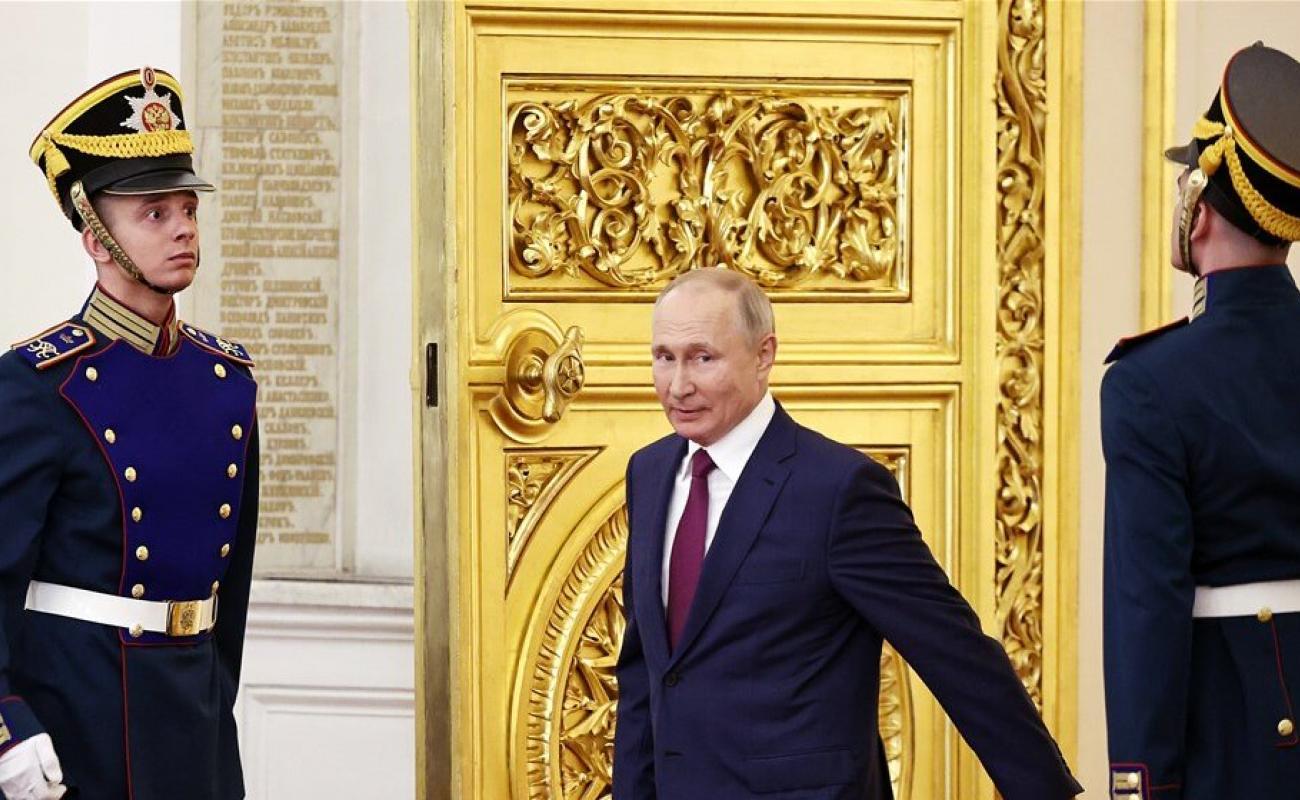Knock, Knock, Knocking on Putin’s Door

It’s unlikely the drone strikes on the Kremlin were a cunning Kremlin plan. There is plenty to suggest this was the work of Vladimir Putin’s many enemies.
It’s never a good look when your enemy knocks down your door from hundreds of kilometers away. And yesterday that’s exactly what Ukraine did, at least according to the Russian version of events. Russia accused the Kyiv government of attempting to assassinate Vladimir Putin by launching two drones against the Kremlin, an attack Russia claims it thwarted.
As with all Kremlin’s statements, this should be taken with a pinch of salt. Since the attack was first reported, several elements have emerged contradicting the Kremlin’s claim that the attack failed. Videos appear to show that drones did hit a building within the Kremlin in the early hours of May 3 — one shows an aerial vehicle exploding on an elevated flagpole of Senatskiy Dvorets, the Kremlin Senate. Yet the incident went unreported until the next day, apart from a small neighborhood group that posted the first video of the incident. The videos match later pictures showing fire damage on the rooftop of the Senatskiy Dvorets. The building was hit twice, with the first drone hitting the Kremlin at around 2:30 am, and the other around 15 minutes later.
The attack may seem unimpressive when looking at the footage of the drone descending towards the Kremlin rooftop, but this would be deceptive. If they were launched from Ukraine, the drones needed to cross hundreds of kilometers, penetrating Russian airspace, and entering what’s supposed to be one of the most secure areas in the world. If the drones were launched from Russia, then Moscow has an internal security problem of dramatic proportions, as it either has Ukrainian running around, or lets Russian opponents make their own drones and fly them into the Kremlin. It is on the same scale, but with more serious implications, than the landing of a light aircraft in Red Square by the German teenage activist Mathias Rust in 1987
While daring, and seemingly impossible, several incidents have highlighted the threat posed by Ukrainian drones to cities like Moscow. On April 23, a drone apparently carrying 17 kilos (37 lbs) of explosives crashed near Moscow and the airspace above Vnukovo International Airport was briefly closed, Russian outlets reported. This was the latest in a series of more or less successful attempts to reach Moscow and its outskirts and comes amid a series of other suspected drone sightings. Earlier this year, Russian Pantsir air defense systems popped up on the rooftop of several key buildings in Moscow, as well as near Putin’s residences.
But was it an assassination attempt, as Moscow claims? This seems preposterous. Drones such as the ones that hit the Kremlin are generally used to strike immobile targets, but rarely specific parts of a specific building. This is particularly the case when crossing hundreds of kilometers and/or having to fight off any electronic countermeasure that may disrupt any type of end-of-flight guidance.
Putin’s quarters in the Kremlin are well protected, and the small charge the drone may have carried (possibly to be able to clear the distance to Moscow) would likely be insufficient to breach them. And of course, such an assassination attempt would have to be based on solid intelligence of the precise whereabouts at a given moment of one of the world’s more security-conscious leaders. The Kremlin claims President Putin was not in the building at the time of the attack. Indeed it is believed that the Russian President has spent most of his time outside of the Kremlin, something Ukrainians would have known.
